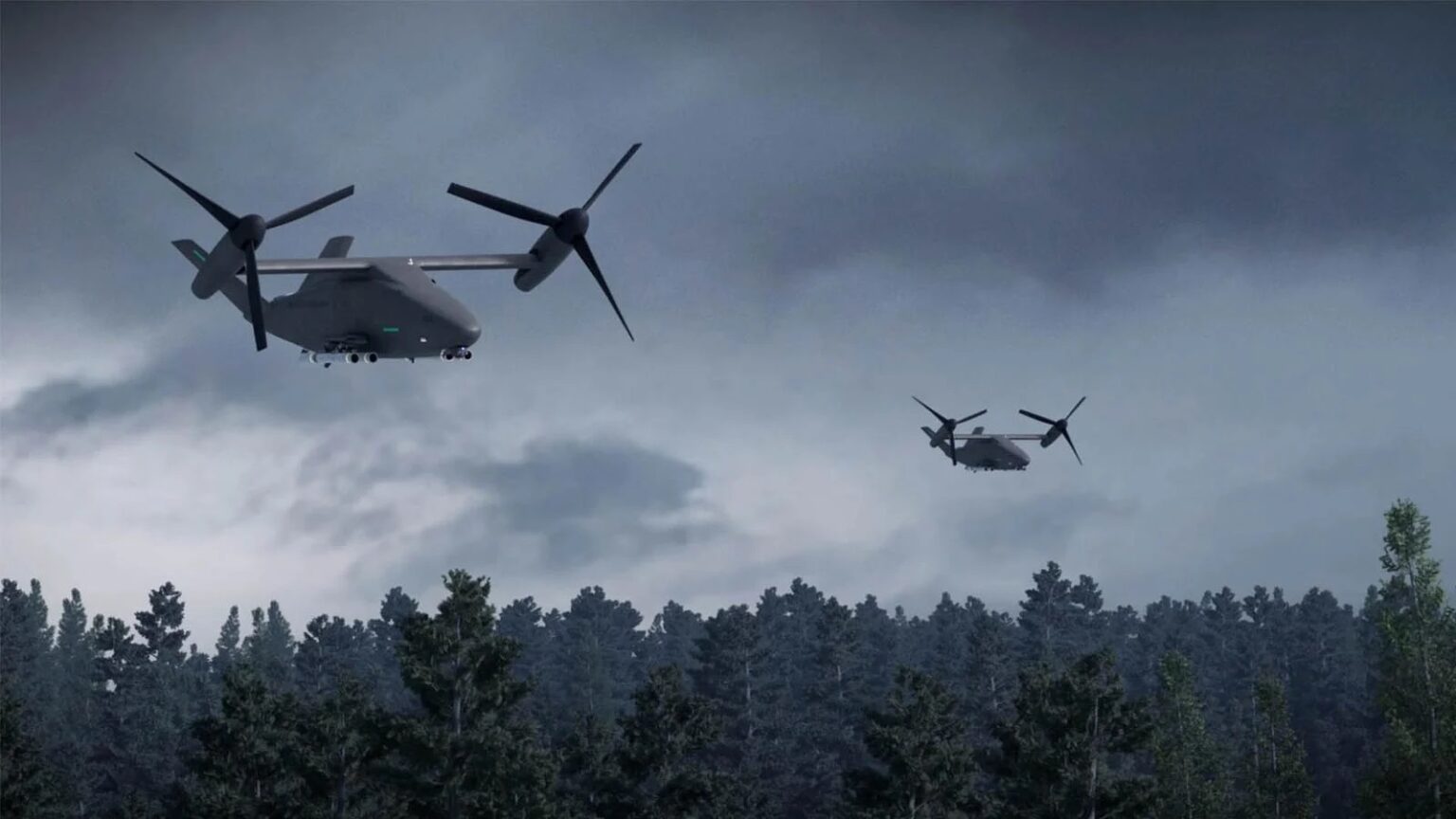The U.S. Army is looking for its own version of a collaborative combat aircraft (CCA) loyal wingman drone that could be delivered to the service in the next couple of years, military officials said at the annual Association of the United States Army (AUSA) conference in mid-October 2025. “Manned-unmanned teaming is the future,” one military leader said at the conference.
The Army’s aviation arm has been collaborating with industry, as well as counterparts from Army commands in the Indo-Pacific and Europe, to devise requirements for a loyal wingman drone program for the past year, Brig. Gen. Cain Baker, director of the Army Aviation Future Capabilities Directorate, said at the AUSA conference. “As we go forward, we’re watching closely in our experimentation to develop a full requirement, potentially to deliver our capability over the next couple of years,” Baker said, according to the Breaking Defense website.
The U.S. Air Force, Navy and Marine Corps all have their own CCA programs. The Air Force, which has made the most progress, plans to award a final production contract in fiscal 2026.
The CCA concept seeks to field large uncrewed aerial vehicles (UAV) to fly alongside the military’s manned aircraft and conduct missions ranging from intelligence, surveillance and reconnaissance (ISR) to offensive strikes. Adding loyal wingman drones could amplify the Army’s airpower, extend its range in battle and increase the survivability of pilots, Baker said.
“A CCA concept allows you to increase mass while also reducing the amount of aviators you’ve got to have in the air,” Baker said. “So, we’re working with both the INDOPACOM [Indo-Pacific Command], we’re working with Europe to look at the capabilities that they need in order to deliver that mass and really survivability.”
The military services also have been working on launched effects programs: smaller UAVs that can be deployed midflight from manned aircraft or from launchers on the ground or at sea. The Army is looking at short-, medium-, long-range and ultra-long-range launched effects, potentially for communications support, electronic warfare, ISR or as loitering munitions or decoys.
“Launched effects, if you think about it, is a CCA, right?” Maj. Gen. Clair Gill, commander of the Army Aviation Center of Excellence, said at the AUSA conference. “These are things that we’re going to launch off of aircraft and are going to operate in a collaborative fashion, potentially autonomously, but we’re going to give them instructions, and they’re going to operate based off of guidance, either off of something on the ground or maybe they’re being quarterbacked in the air.”
“Manned-unmanned teaming is the future,” said Col. Stephen Smith, head of the Army’s 160th Special Operations Aviation Regiment, better known as the Night Stalkers. “We’ve talked about the potential of launched effects off the aircraft, or a potential loyal wingman.”
Smith said the 160th already has been teaming its helicopters with MQ-1C Gray Eagle drones and has been exploring expanded mission capabilities for drones, The War Zone website reported. But “we still see a human in the loop,” he said at the conference.
Baker said the Army’s CCA will differ from those of the other services, which are basically unmanned fighter jets. “When you look at a CCA role that’s really linked to rotary wing, that is a different dynamic than you have at (6,100 to 9,100 meters). It’s a whole set of different behaviors, a whole set of different capability,” he said at the conference. “You need to marry that up with an aircraft that’s flying at 30.5 meters [at] 150-plus knots at night.”
The Army plans to invite defense industry leaders to an experimentation event in early 2026, Baker said. Several companies have recently unveiled new UAV projects.
Boeing announced on October 14 that it is developing an unmanned tiltrotor concept called the Collaborative Transformational Rotorcraft, or CxR. The drone could serve as a loyal wingman to the Army’s AH-64 Apache helicopters or the CH-47 Chinook, the company says.
Sikorsky Aircraft has two systems that could work as CCAs. The Lockheed Martin subsidiary unveiled its NOMAD family of vertical takeoff and landing drones on October 6, and then announced on October 13 that it would offer a fully autonomous version of the UH-60L Black Hawk — the U-Hawk.

